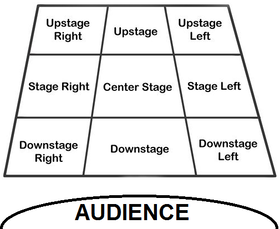
Introduction to Stage Directions
When diving into the world of theater, one of the first things an actor encounters is the enigmatic realm of stage directions. These italicized instructions, found within the pages of a play, serve as the playwright’s vision, guiding actors, directors, and the production team on how to bring the story to life.
Understanding the Essence of Stage Directions
Stage directions are the playwright’s way of communicating the technical and performative aspects of a play. They provide insights into the setting, character movements, emotions, and the overall ambiance of a scene. From the subtle nuances of a character’s emotions to the grandeur of a set design, stage directions are the blueprint for a theatrical production.
The Role of Stage Directions in a Play
- Character Movement and Positioning: Stage directions guide actors on where to move, stand, or sit. Terms like “stage left,” “center stage,” and “downstage” are used to indicate specific positions on the stage.
- Setting the Scene: They paint a picture of the setting, from the layout of a room to the time of day, helping the design team recreate the playwright’s vision.
- Character Insights: Detailed descriptions about characters, from their appearance to their demeanor, provide actors with a foundation to build their portrayal.
- Technical Aspects: Lighting, sound effects, and other technical elements are often specified to enhance the mood and atmosphere of a scene.
Delving Deeper: Types of Stage Directions
Decoding the Stage: Navigating the Nine Areas
From an actor’s vantage point, the stage is divided into nine distinct areas. Understanding these areas is crucial for precise movement and positioning:
- Stage Left (House Right): To the audience’s right.
- Stage Right (House Left): To the audience’s left.
- Downstage: The section closest to the audience.
- Centerstage: The central square of the nine areas.
- Upstage: The section furthest from the audience.

By combining these primary directions, we derive the nine areas: downstage left, downstage center, downstage right, centerstage left, centerstage center, centerstage right, upstage left, upstage center, and upstage right. For instance, “upstage left” corresponds to the area on the audience’s right but furthest from them.
Scenic Stage Directions: Crafting the World
Scenic directions offer a detailed description of the setting. For example, the opening directions of Ibsen’s Hedda Gabler provide a meticulous layout of the room, from the placement of doors to the autumn trees outside. Such detailed instructions help the design team recreate the playwright’s envisioned world on stage.
Character Directions: Delving into Emotional Depths
Character directions offer a window into a character’s psyche. These directions, often placed in parentheses next to a character’s name, hint at the emotional state or intent behind a line. For instance, in A Raisin in the Sun, Ruth’s line is delivered with “maximum indifference,” suggesting her emotional detachment.
Sound, Lighting, and Technical Aspects
These directions enhance the ambiance of a scene. A sudden gunshot or a dimly lit room can drastically alter the mood, making it essential for actors to be aware of these elements.
Performance Directions: Choreographing Movements
Performance directions guide an actor’s physical movements on stage, from grand gestures to subtle reactions. In A Doll’s House, Nora’s reaction to Krogstad’s arrival is accentuated by her physical response, as described in the stage direction. Such directions, while seemingly simple, can amplify the emotional resonance of a scene.
The Art of Pausing
The power of silence in theater is unparalleled. Terms like “pause,” “beat,” and “moment” indicate a significant, non-verbal event. These silent moments are often charged with emotion, tension, or a shift in dynamics, making them crucial for actors to understand and execute.
Punctuation in Dialogue: The Unsung Indicators
Playwrights often employ punctuation marks to convey the rhythm and flow of dialogue. Ellipses (...) indicate a trailing thought, while dashes (-) signify an abrupt interruption. The slash (/) denotes simultaneous dialogue, adding layers of complexity to a scene.
To Follow or Not to Follow: The Debate
There are two primary schools of thought regarding stage directions:
- The “Honour Everything” Approach: This method emphasizes following every direction to the letter, believing that the playwright’s vision is paramount.
- The “Freedom of Interpretation” Approach: Advocates of this method believe in the actor’s freedom to interpret and make choices, even if it means deviating from the script.
In reality, a balance between the two often yields the best results. While the text should be respected, actors must also trust their instincts and bring their unique touch to the role.
Wrapping Up: The Power of Stage Directions
Stage directions, while seemingly simple, are the backbone of any theatrical production. They provide a roadmap for actors, directors, and the entire production team, ensuring that the playwright’s vision is realized on stage. Whether you’re an aspiring actor or a seasoned professional, understanding and mastering stage directions is the key to delivering a compelling performance.







